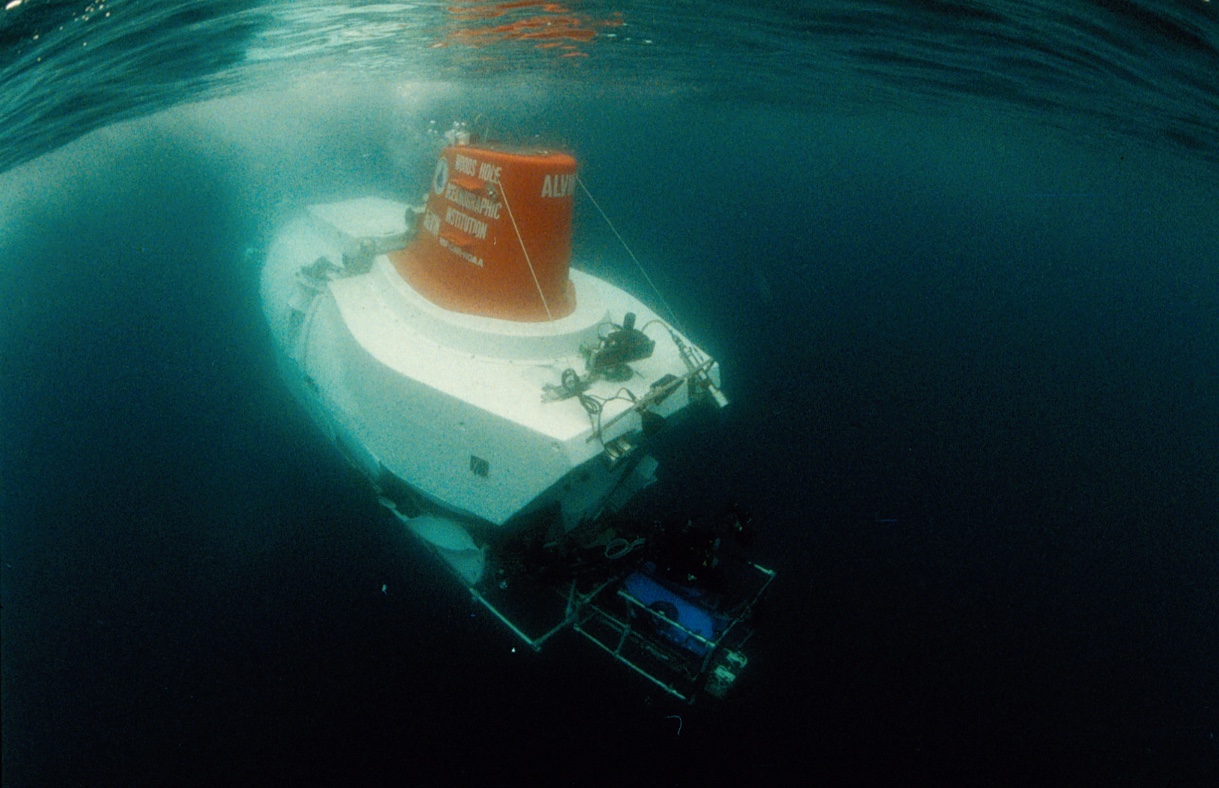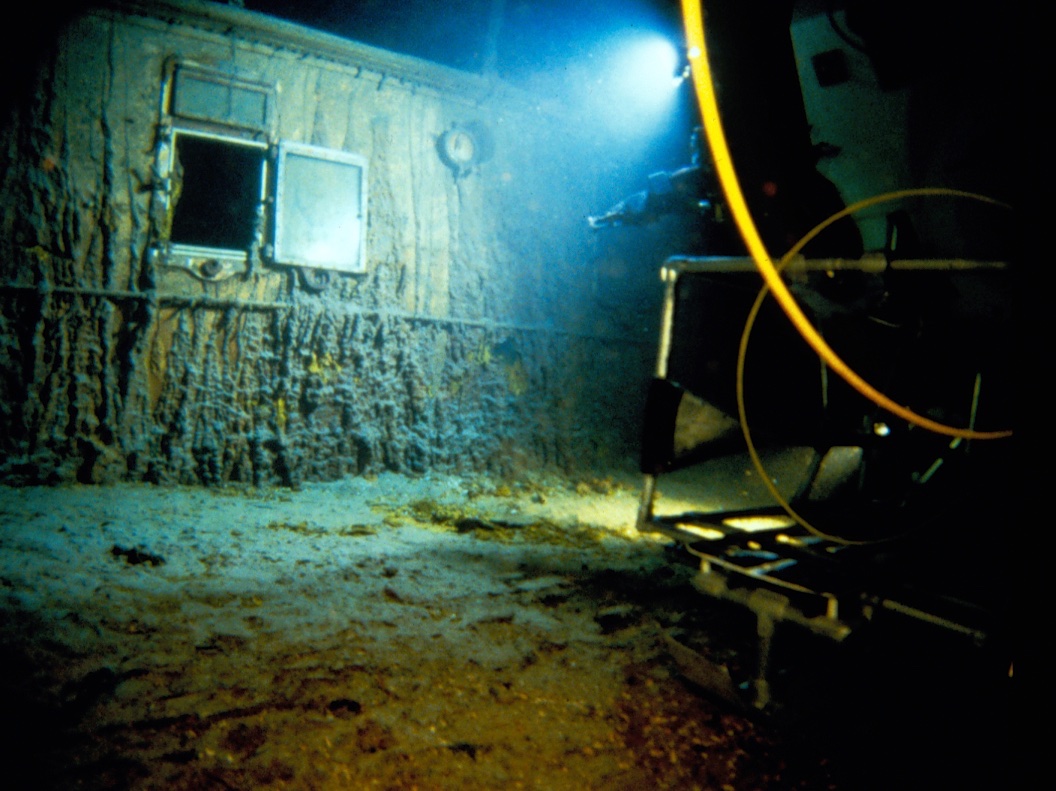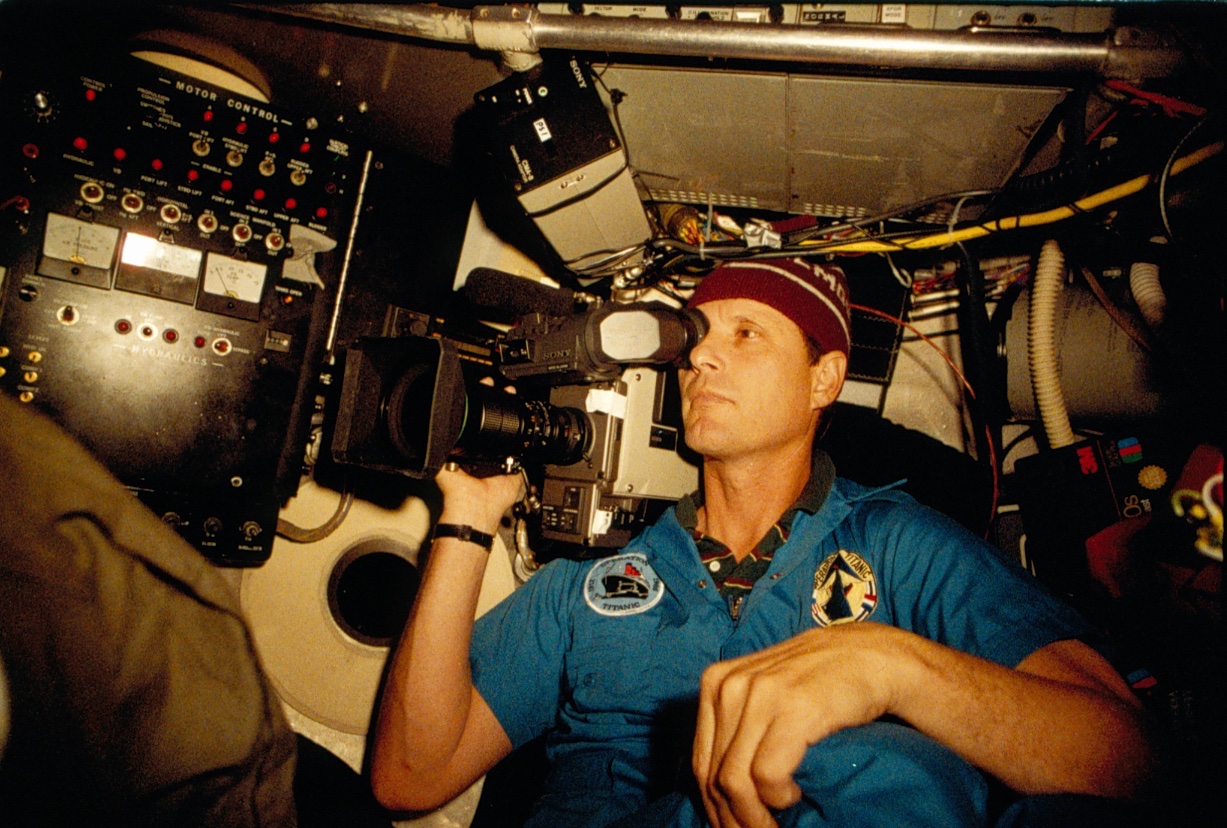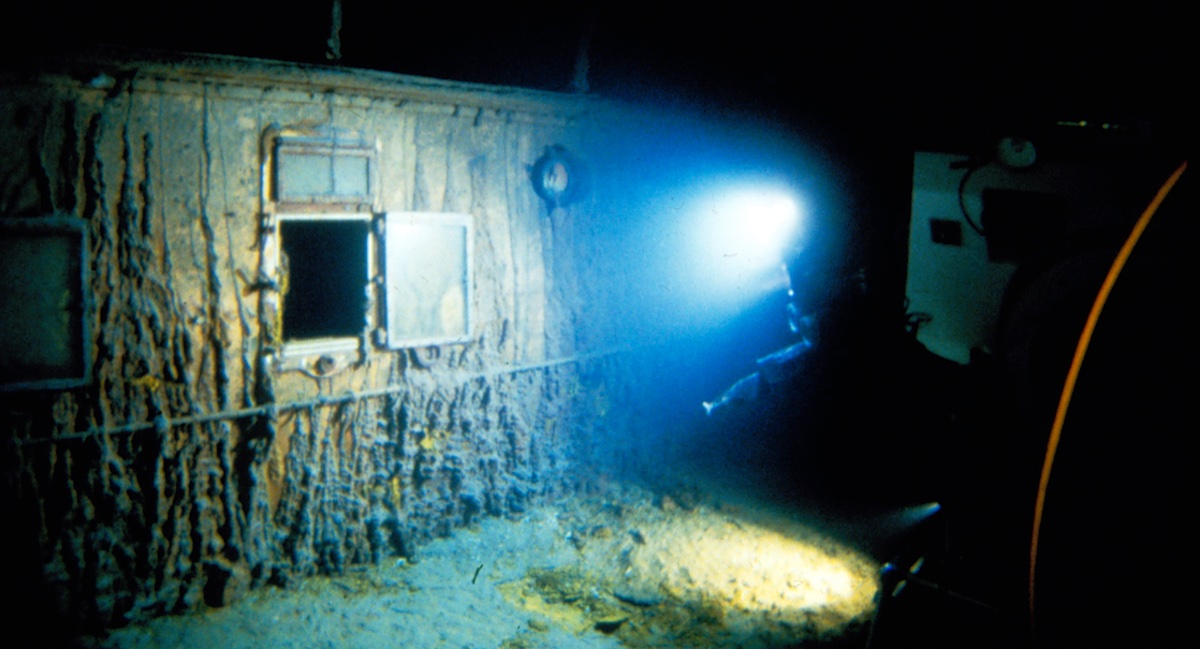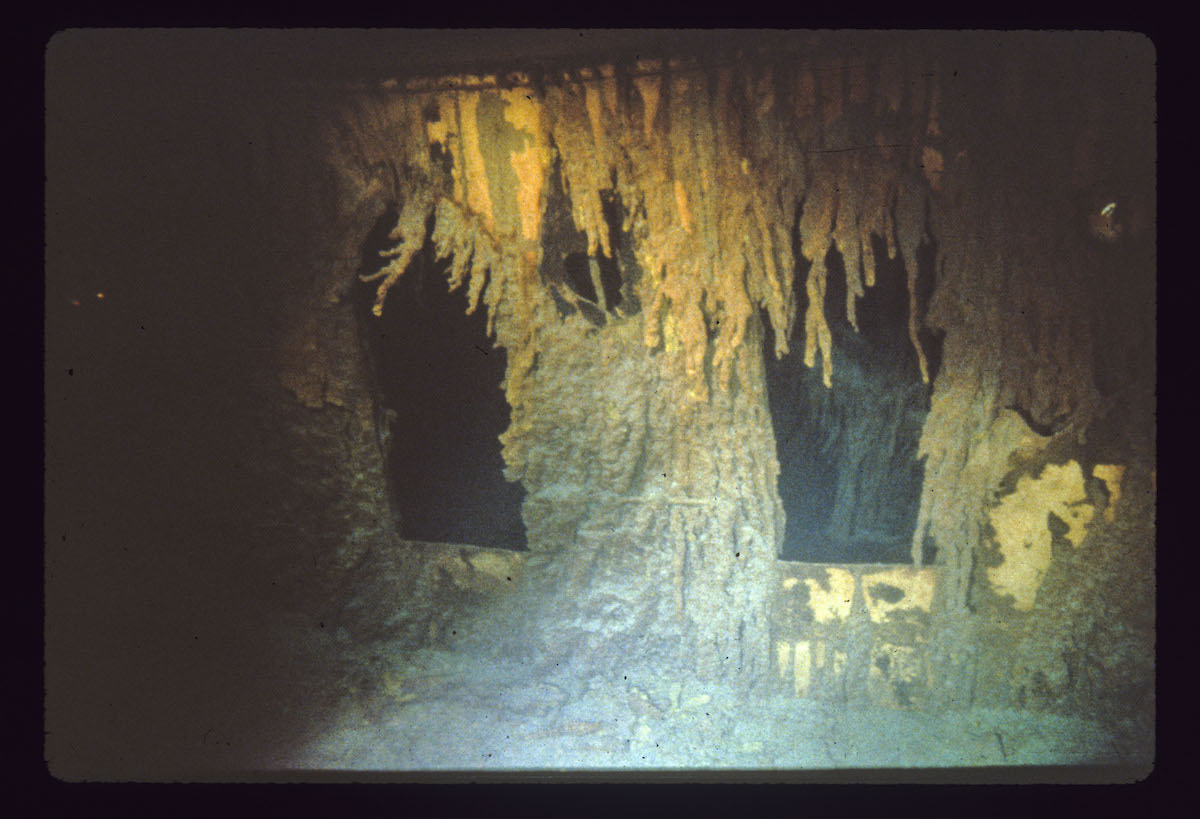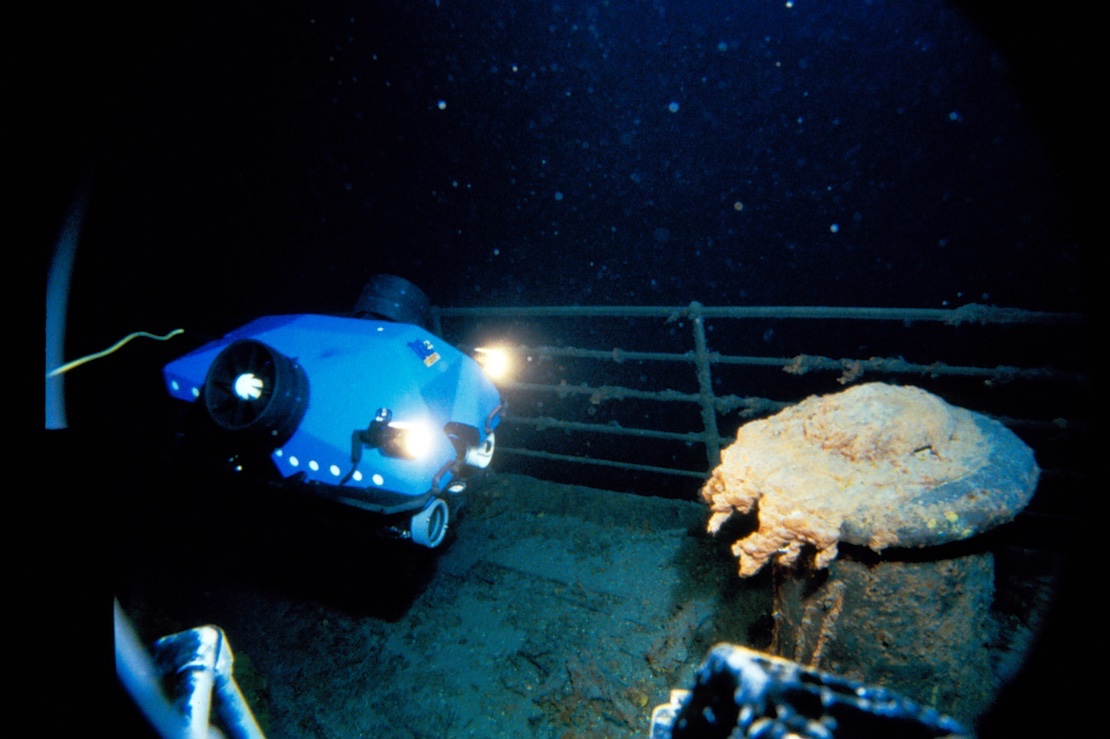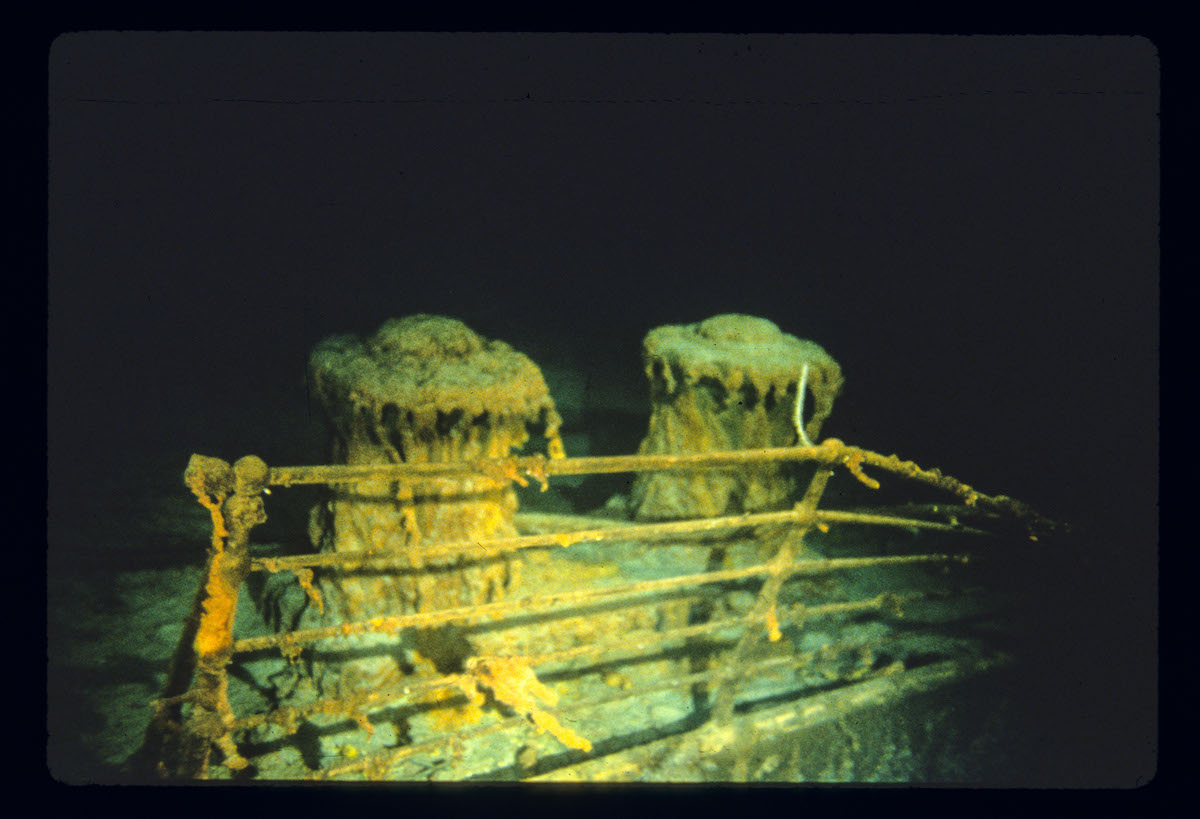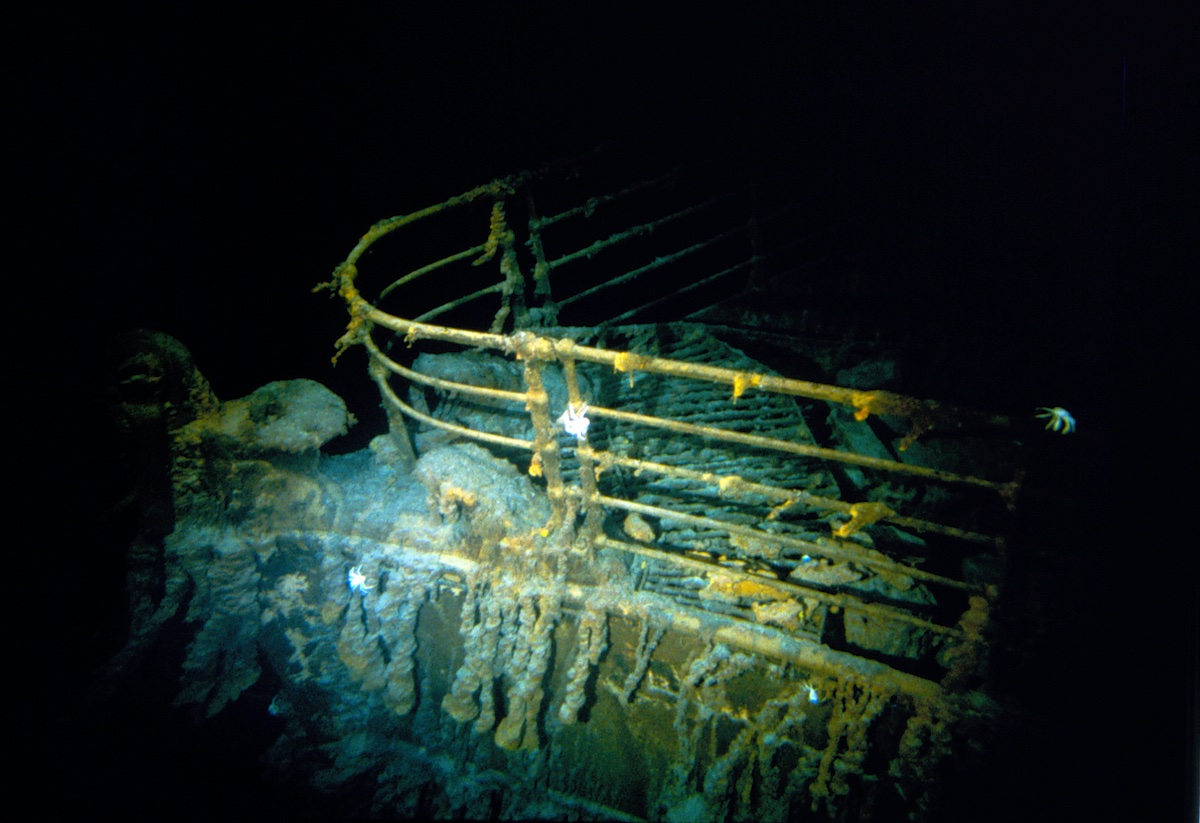

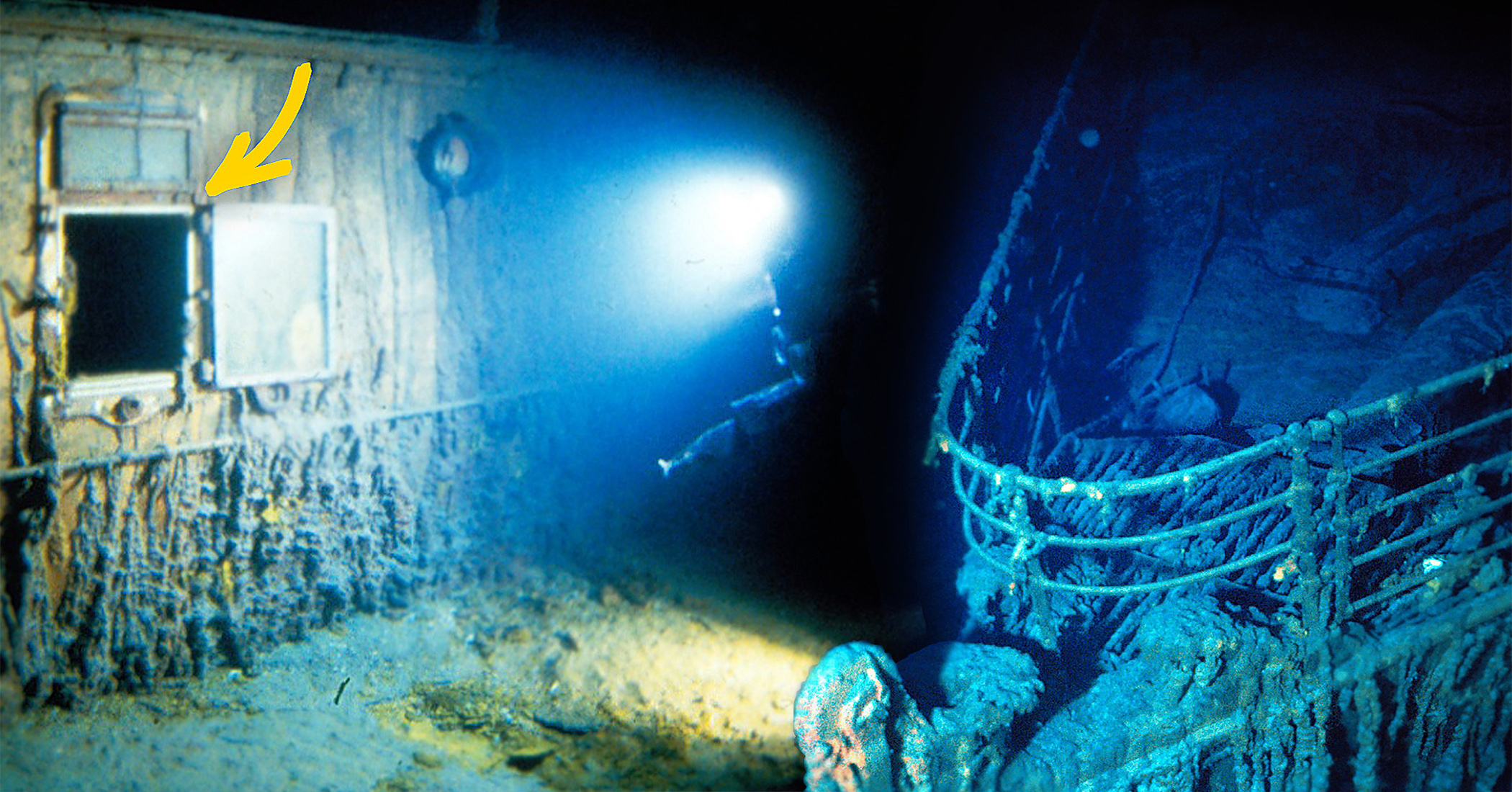
The crew of human-occupied vehicle (HOV) Alvin drank in the spectacle of a shipwreck’s haunting bow, recording the historic moment with their vehicle’s underwater video camera. The three researchers were the first humans to lay eyes on the “unsinkable” passenger liner, RMS Titanic, since her ill-fated voyage in 1912.
Their 1986 expedition captured video near the bottom of the North Atlantic, some 400 miles south of the coast of Newfoundland, where the vessel sank nearly 75 years earlier. Much of that footage remained unreleased—until now.
In September 1985, Dr. Robert Ballard of the Woods Hole Oceanographic Institution (WHOI) led the team that first discovered the ship’s final resting place nearly 12,500 feet below the surface of the ocean. Nine months later, Ballard and his team returned to the wreck site with the three-person HOV Alvin and the newly-developed, remotely operated vehicle (ROV) Jason Jr.
Employing these cutting-edge robotic vehicles, they managed to capture the first video of the most alluring shipwreck the world had ever seen, making headlines the world over.
Now, marking the remastering of James Cameron’s 1997 blockbuster epic “Titanic” in February, WHOI has debuted 80 minutes of previously unseen footage from the historic 1986 expedition for public voyeurs to savor. “The newly released video highlights the remarkable achievement by the team to bring iconic images of the ship back to the surface,” WHOI stated in a press release.
In footage from said expedition, we join Ballard and his crew aboard Alvin as they scan the Titanic’s deck searching for a landing spot to park their deep-sea vehicle.
Split-screen video with syncing camera feeds from both Alvin and Jason Jr. shows the smaller robotic vehicle departing from the HOV to explore the mysterious wreck’s interior.
Motoring through pitch-black waters to peruse the gargantuan luxury ship, Jason Jr. pays a visit to a chief officer’s cabin. The remote camera takes in the ship’s once-majestic promenade where voyagers once gazed out at icebergs across the maritime horizon, perhaps from the comfort of an armchair or recliner.
Near the one-hour mark, HOV Alvin maneuvers along the ocean bottom, scanning for debris surrounding the ship. Along her hull, we spy tendril-like “rusticles” that hang hauntingly; these formed over decades after the ship came to rest on the sea floor.
Looking downward upon her forward deck, one gains a sense of the liner’s size as Alvin passes over a row of massive capstans, once used to haul her enormous chains.
Meanwhile, many are surely familiar with the ship’s now-iconic bow railings, made famous by the movie of her namesake. These make a dramatic cameo in the captivating footage.
“More than a century after the loss of Titanic, the human stories embodied in the great ship continue to resonate,” filmmaker James Cameron said. “Like many, I was transfixed when Alvin and Jason Jr. ventured down to and inside the wreck. By releasing this footage, WHOI is helping tell an important part of a story that spans generations and circles the globe.”
Although efforts were made to locate and salvage RMS Titanic almost immediately after she sank on April 15, 1912, technological limitations at the time plus the vast expanse of the search area made it impossible to locate the remains.
Decades later, newly-developed imaging technology including Argo, a towed underwater camera sled, allowed researchers aboard the vessel Knorr to capture the first photographs of the wreck on September 1, 1985.
The expedition returned in 1986 to mark another technological milestone; they deployed HOV Alvin and ROV Jason Jr., enabling humans to lay eyes on the sunken Titanic for the first time ever.
“The WHOI-led 1986 expedition demonstrated new underwater robotic systems that have changed how we explore the deep ocean. The human-occupied submersible Alvin brought scientists down 12,500 feet to the Titanic,” said WHOI engineer Dana Yoerger, who participated in both expeditions.
“Operating from Alvin, we used the Jason Jr. robot to penetrate Titanic and transmit images of the ship’s interior while the people remained safely outside the wreckage. For WHOI and the entire ocean research community, these advances provided an important foundation for modern deep-sea exploration technology.”
All the photos and video recently released were taken from cameras on HOV Alvin and ROV Jason Jr. between July 13–24 in 1986. Most of said footage is now available for public viewing.
(Courtesy of WHOI Archives /©Woods Hole Oceanographic Institution)
Share your stories with us at emg.inspired@epochtimes.com, and continue to get your daily dose of inspiration by signing up for the Inspired newsletter at TheEpochTimes.com/newsletter


